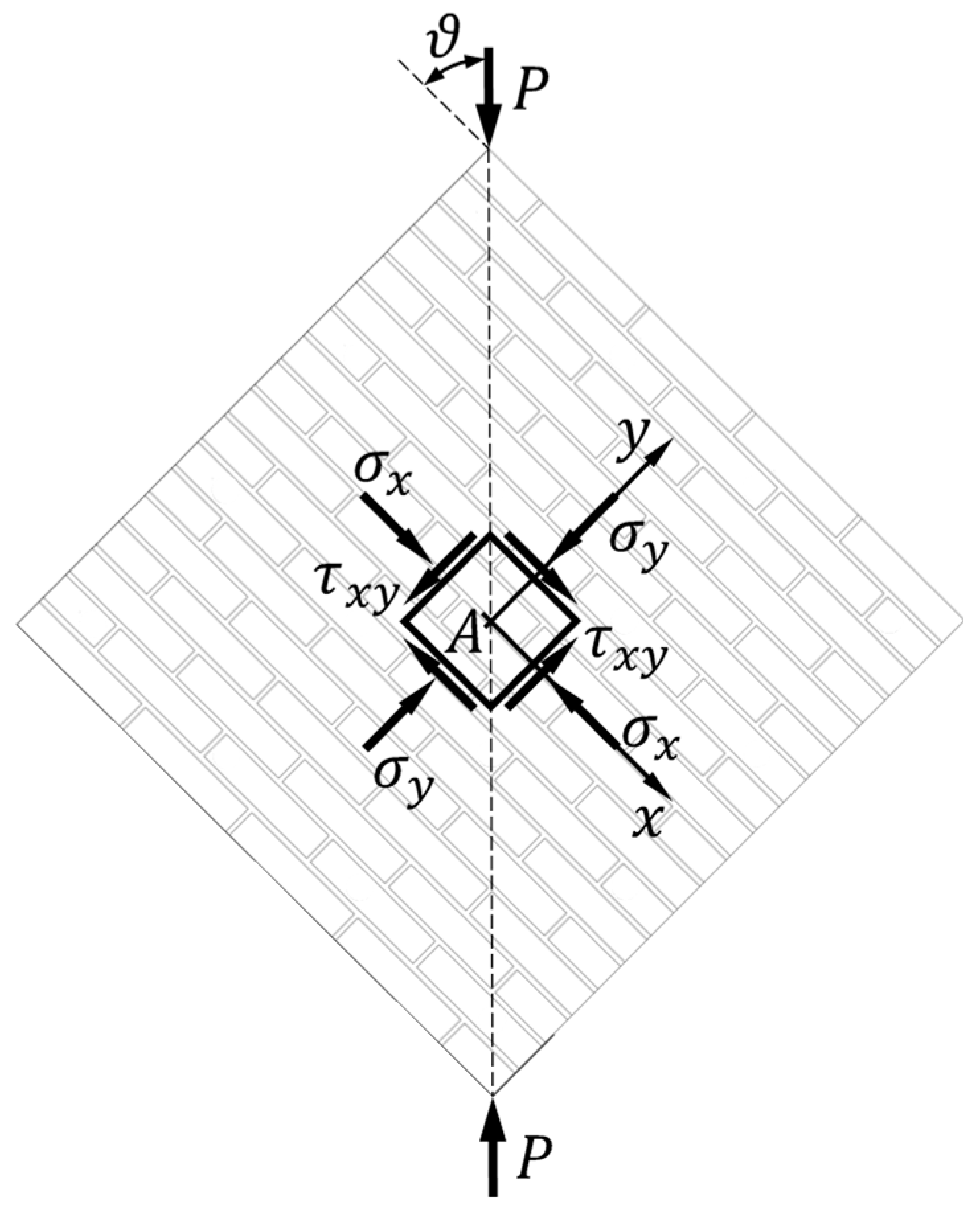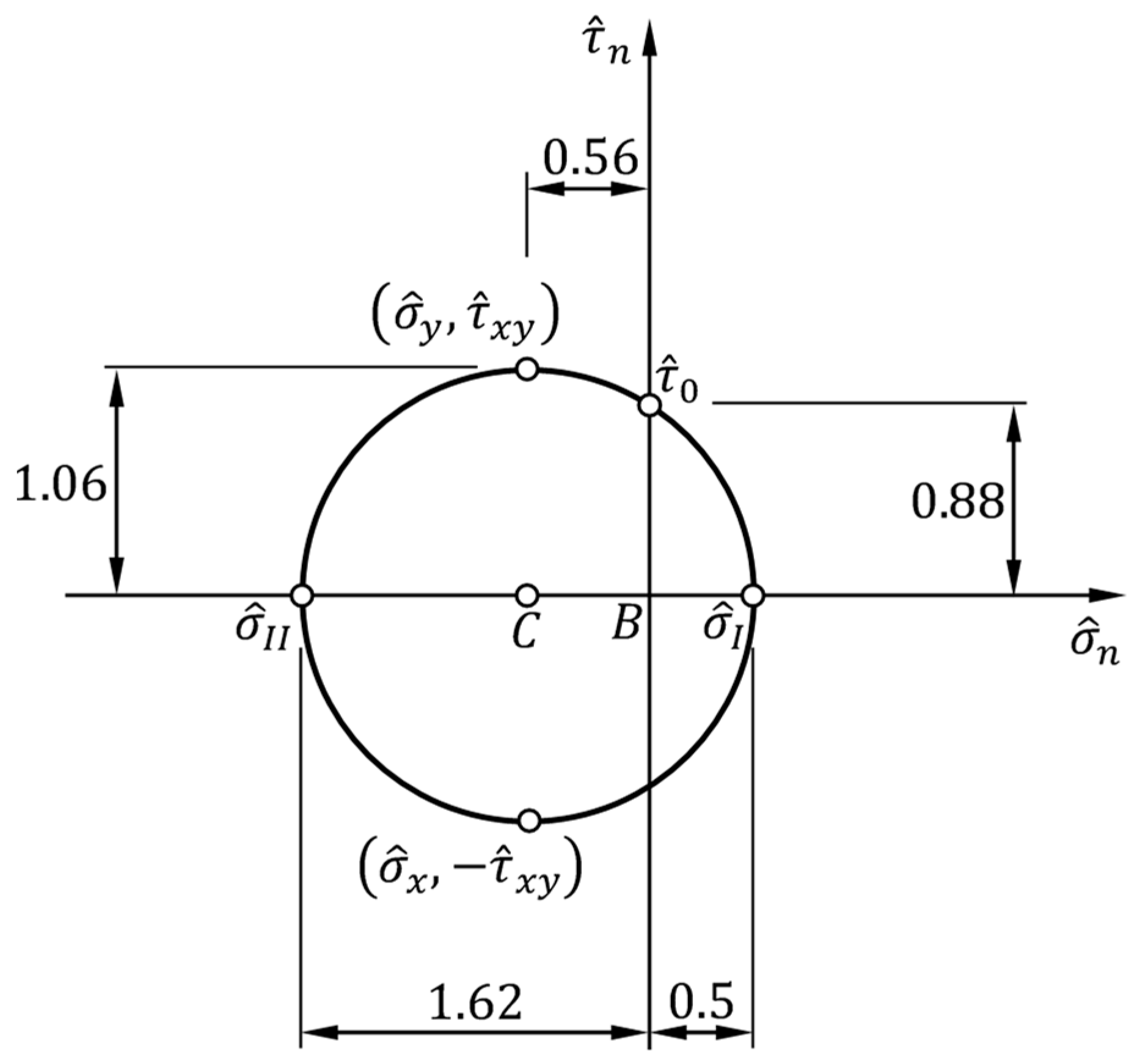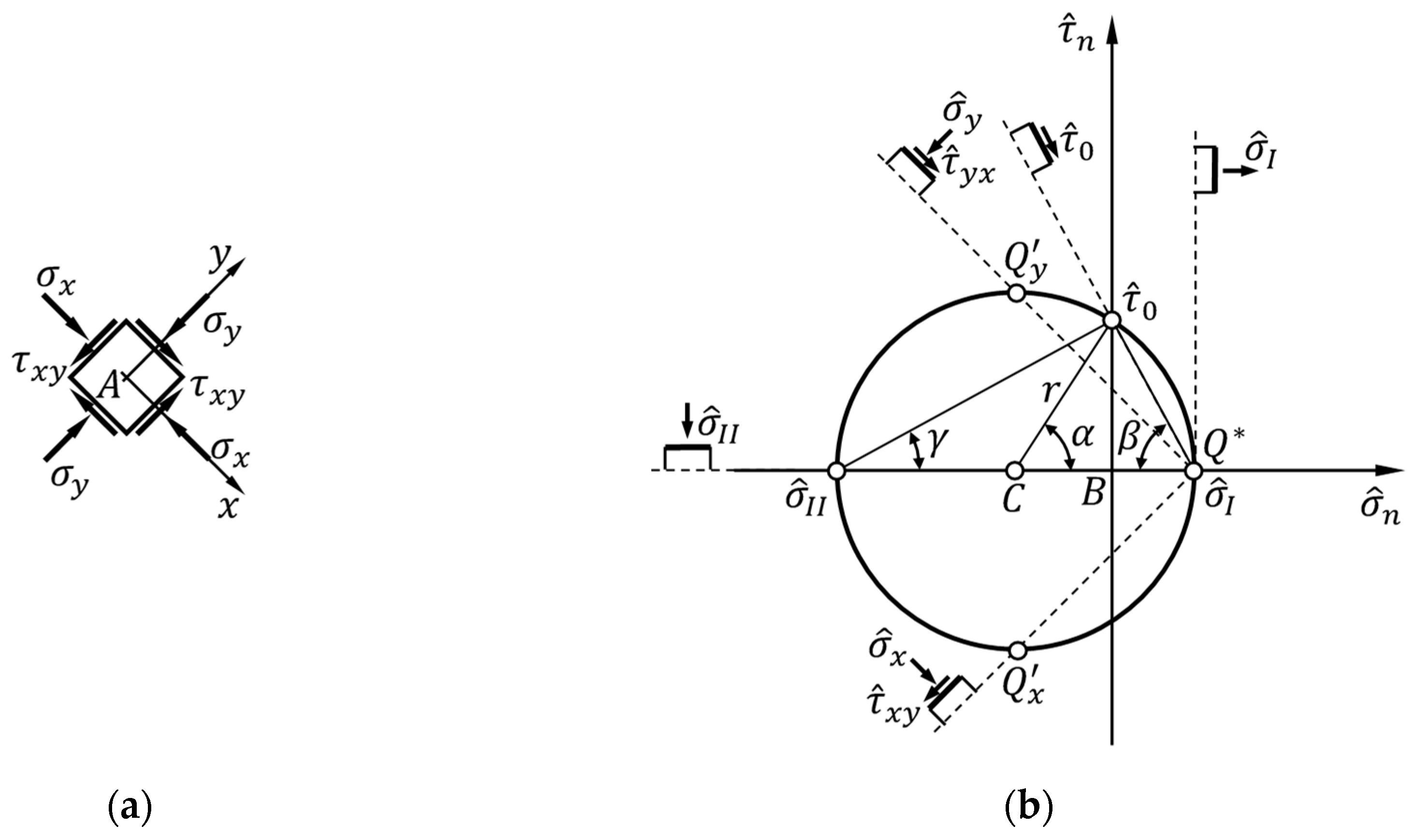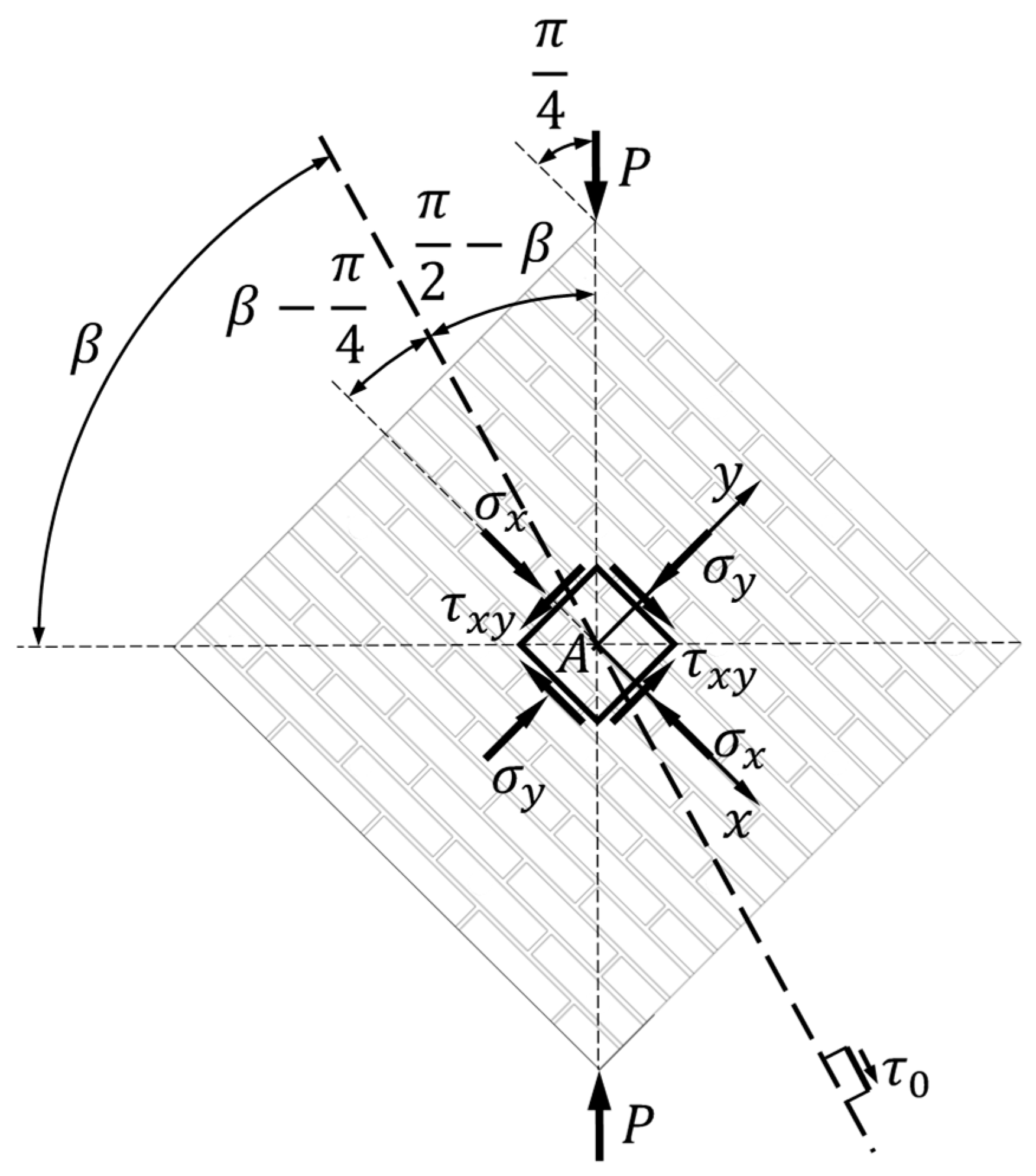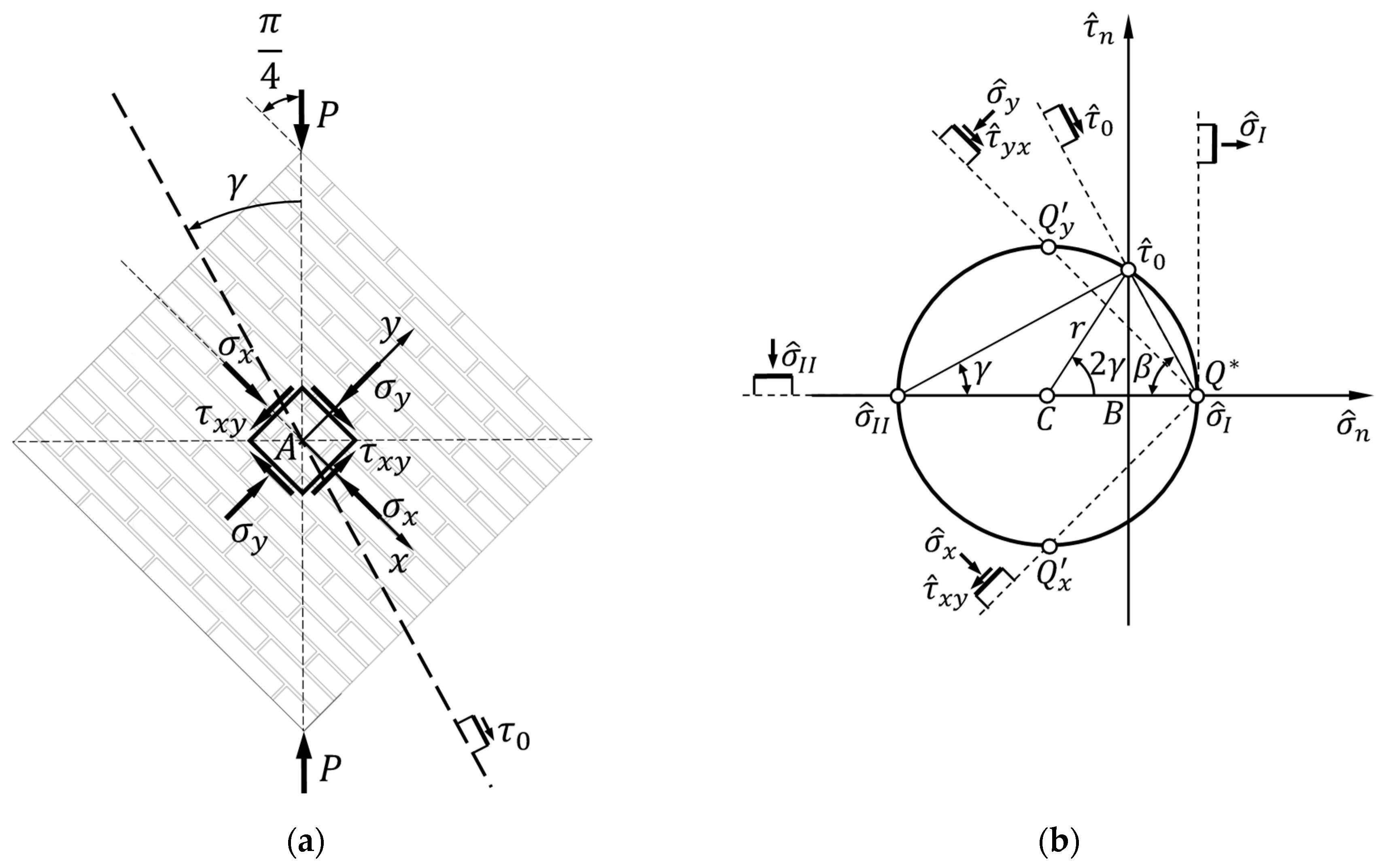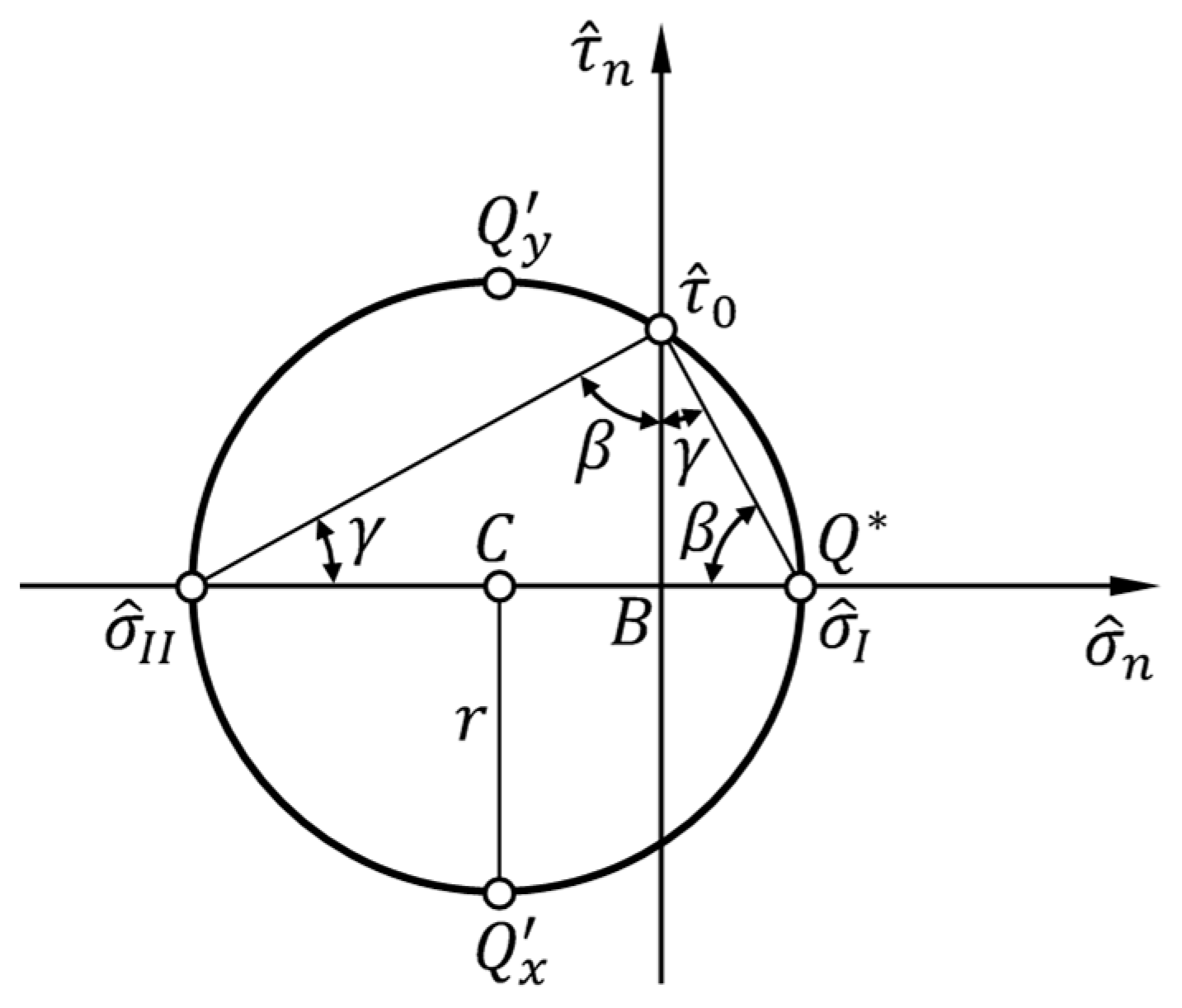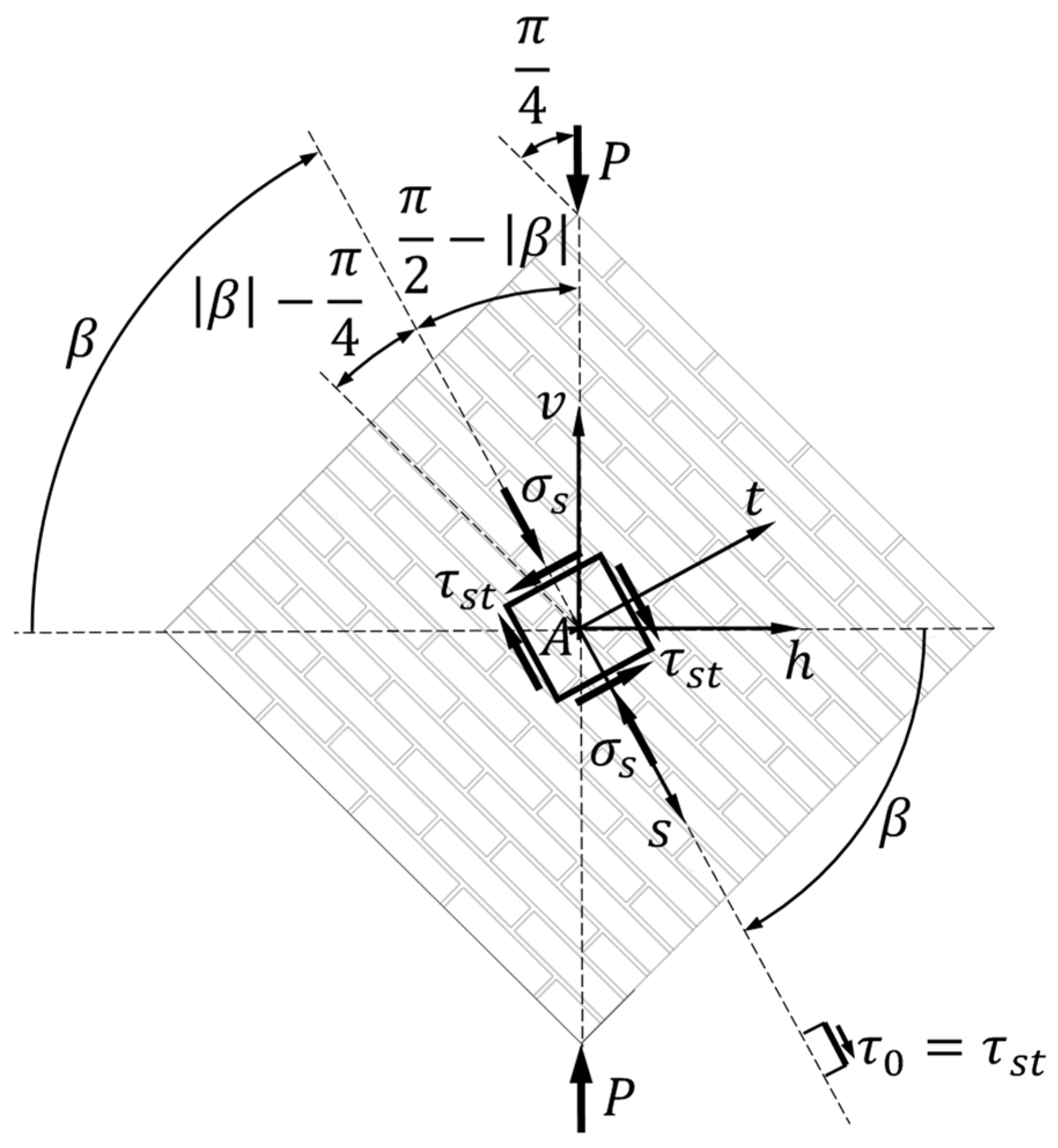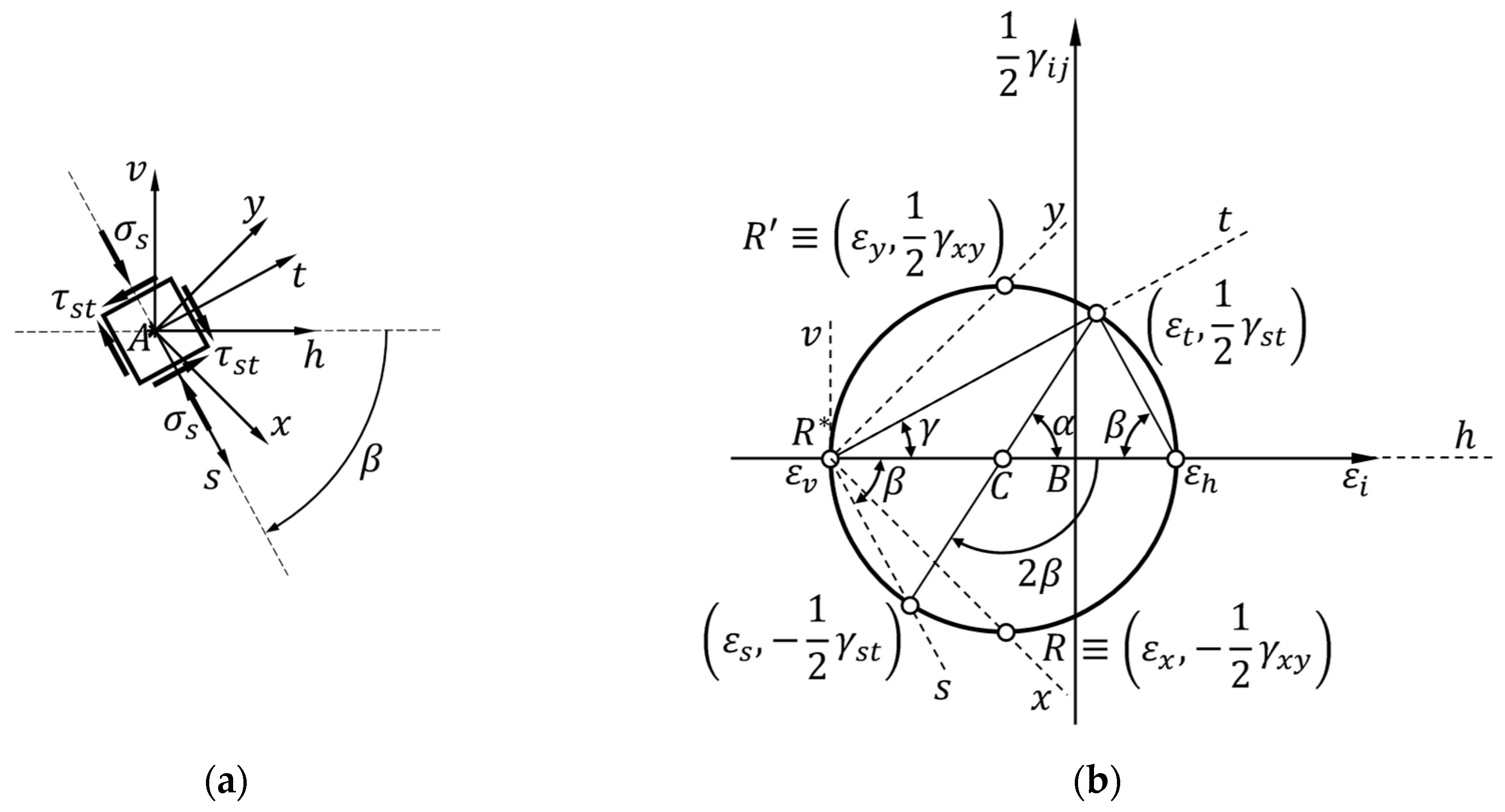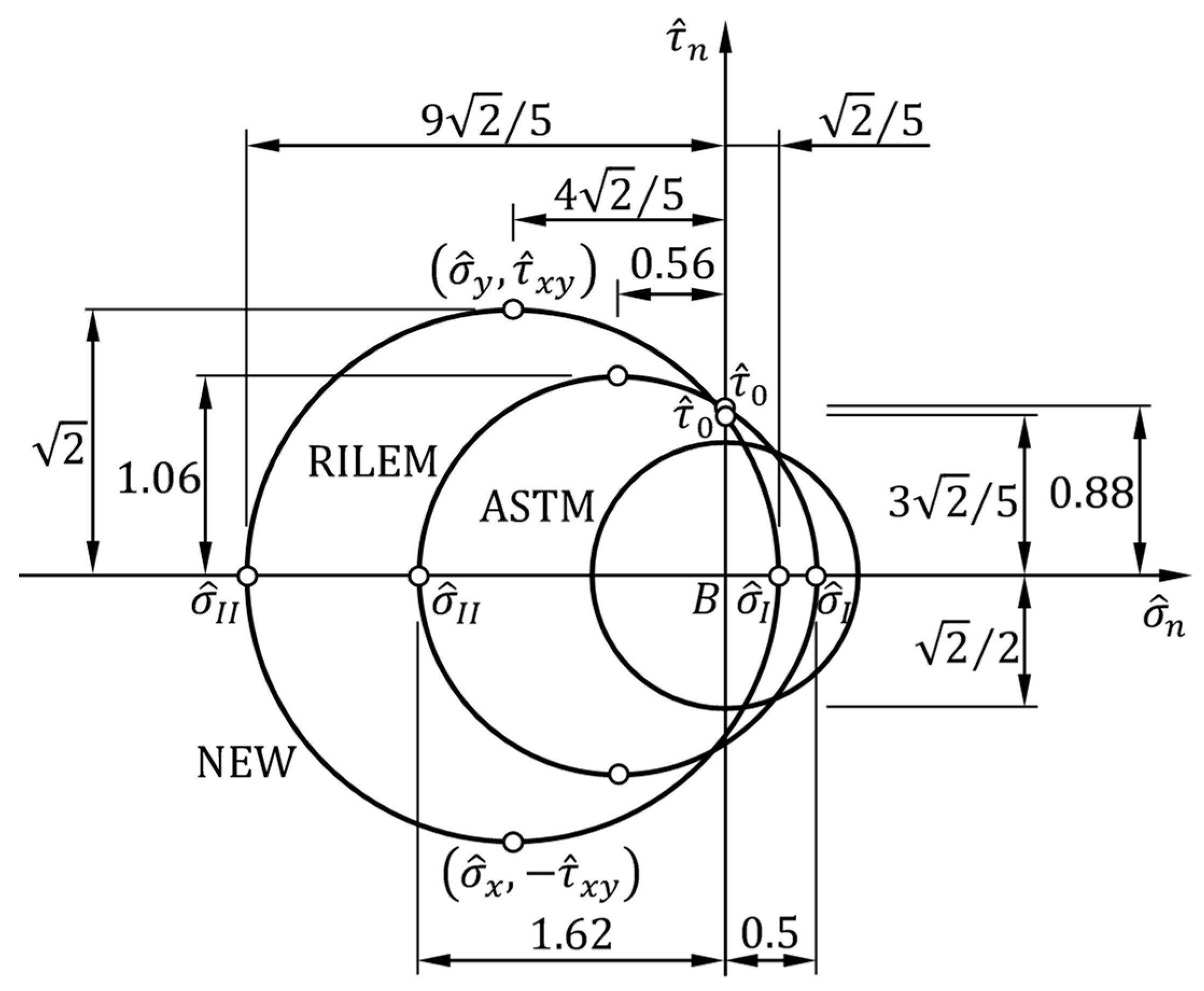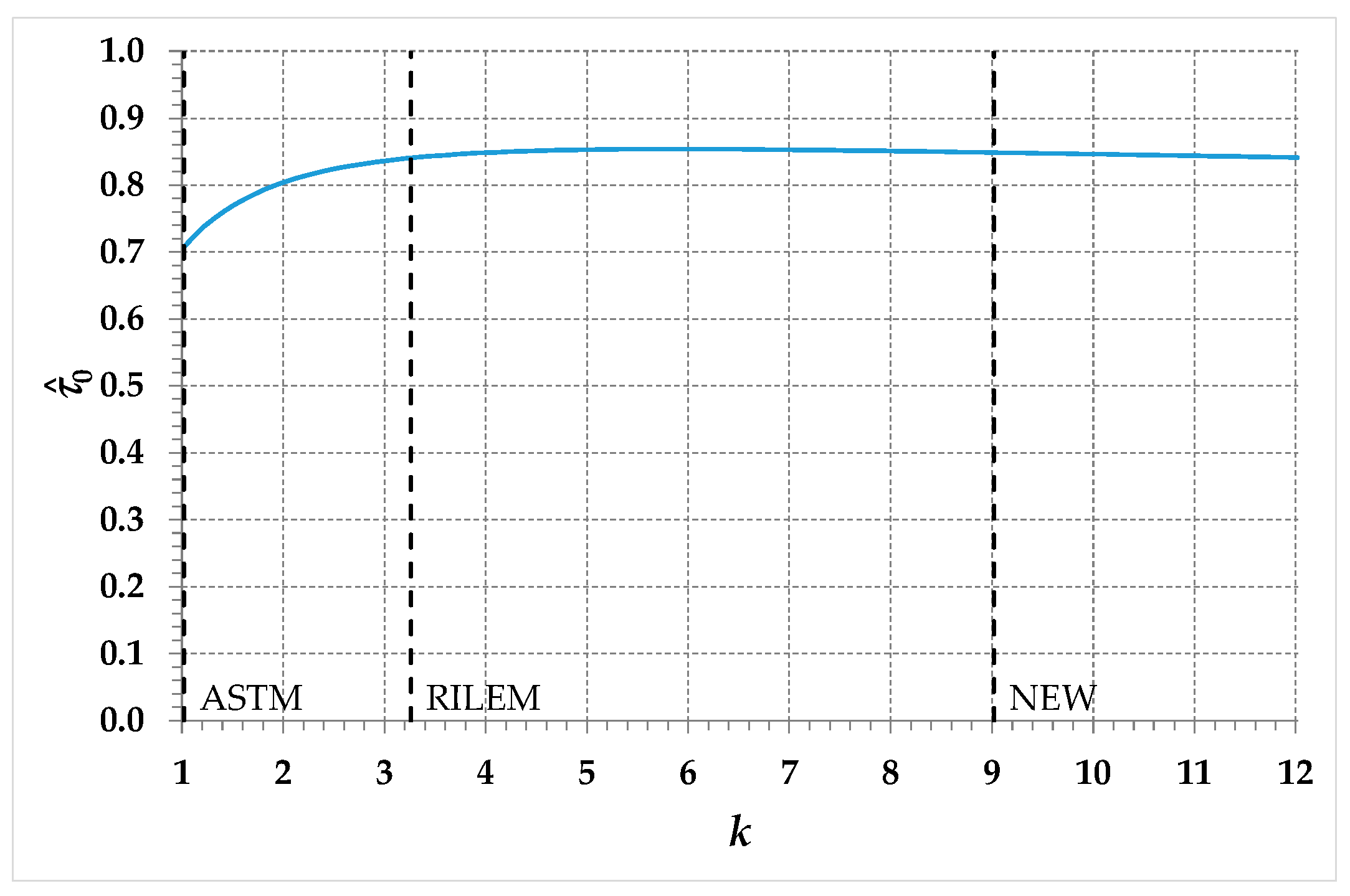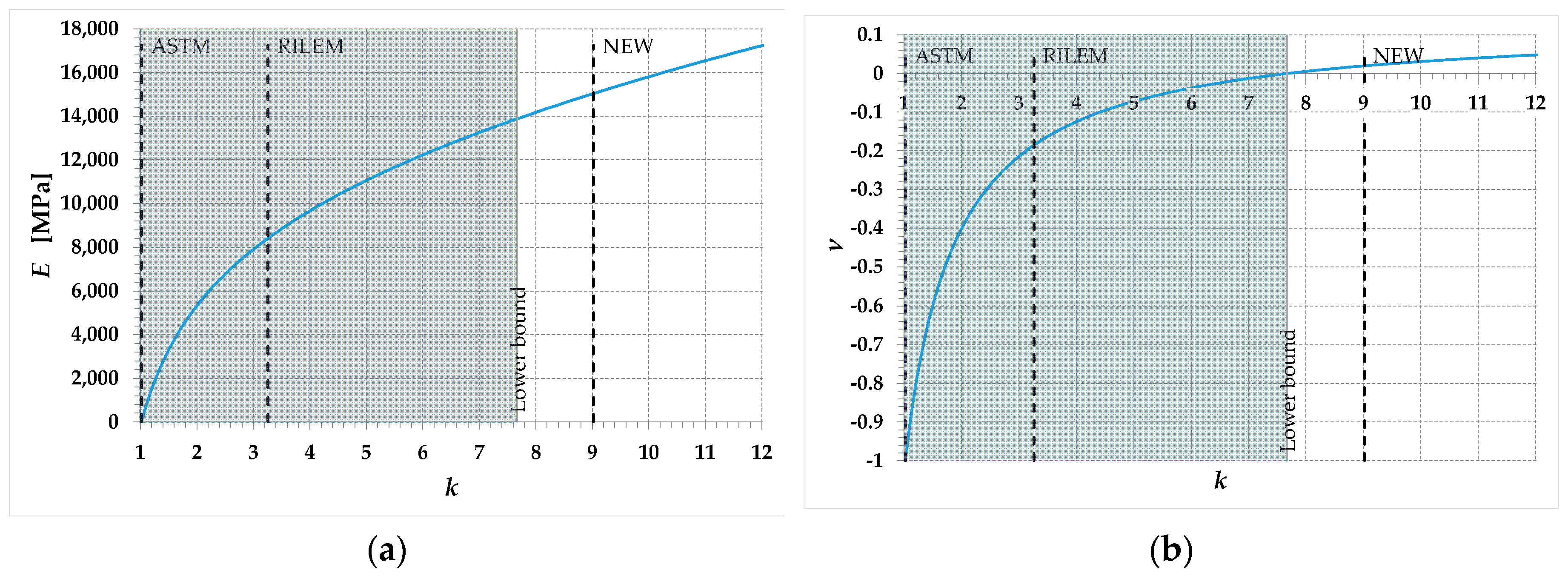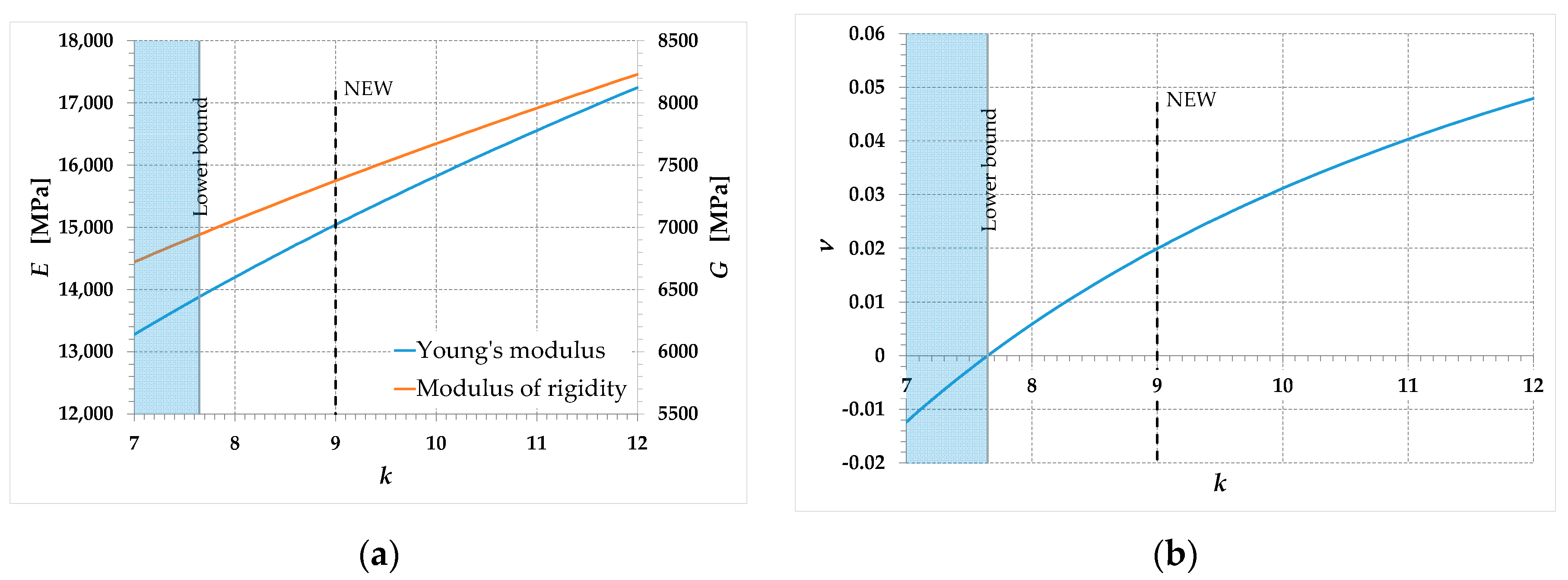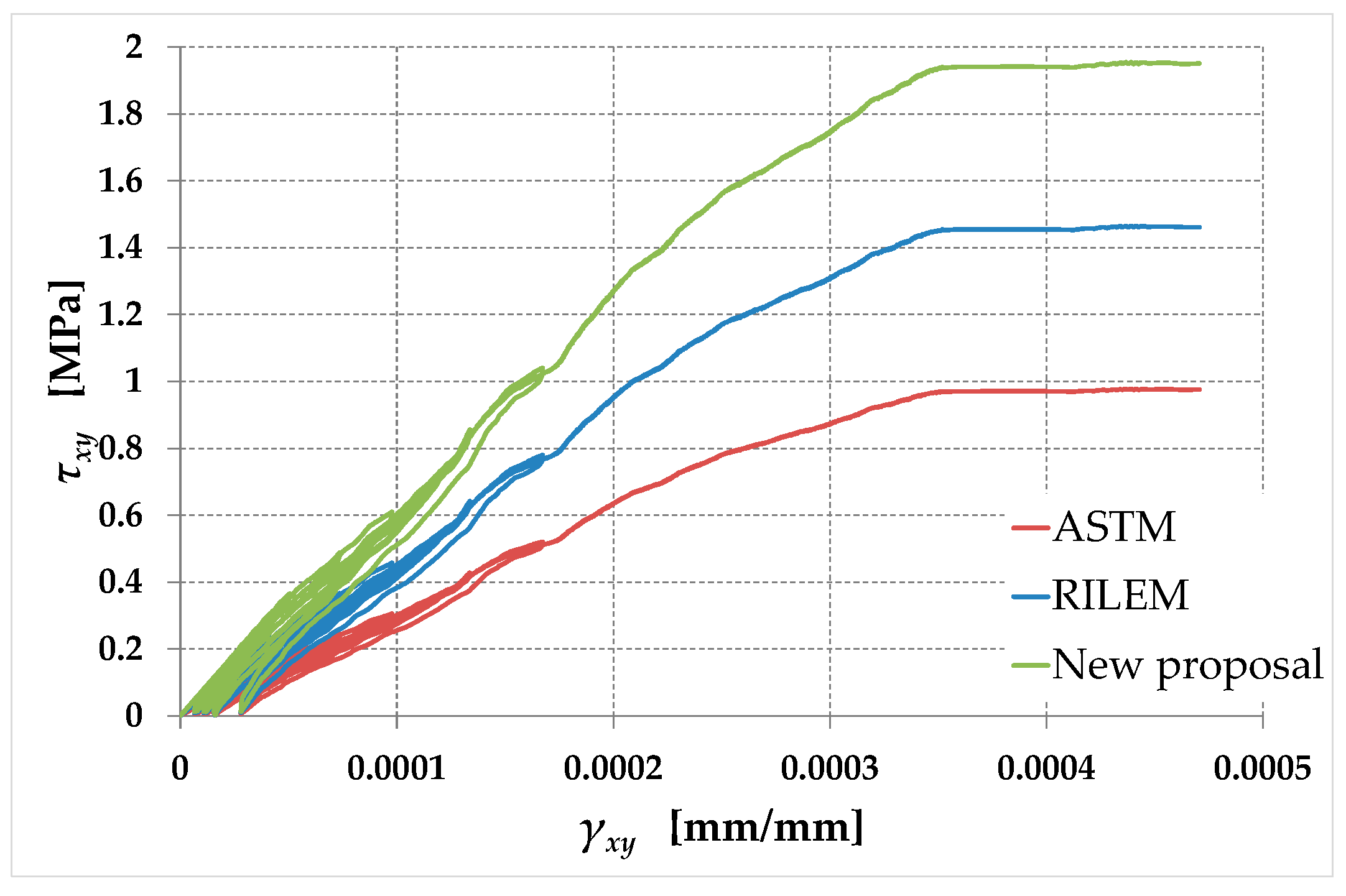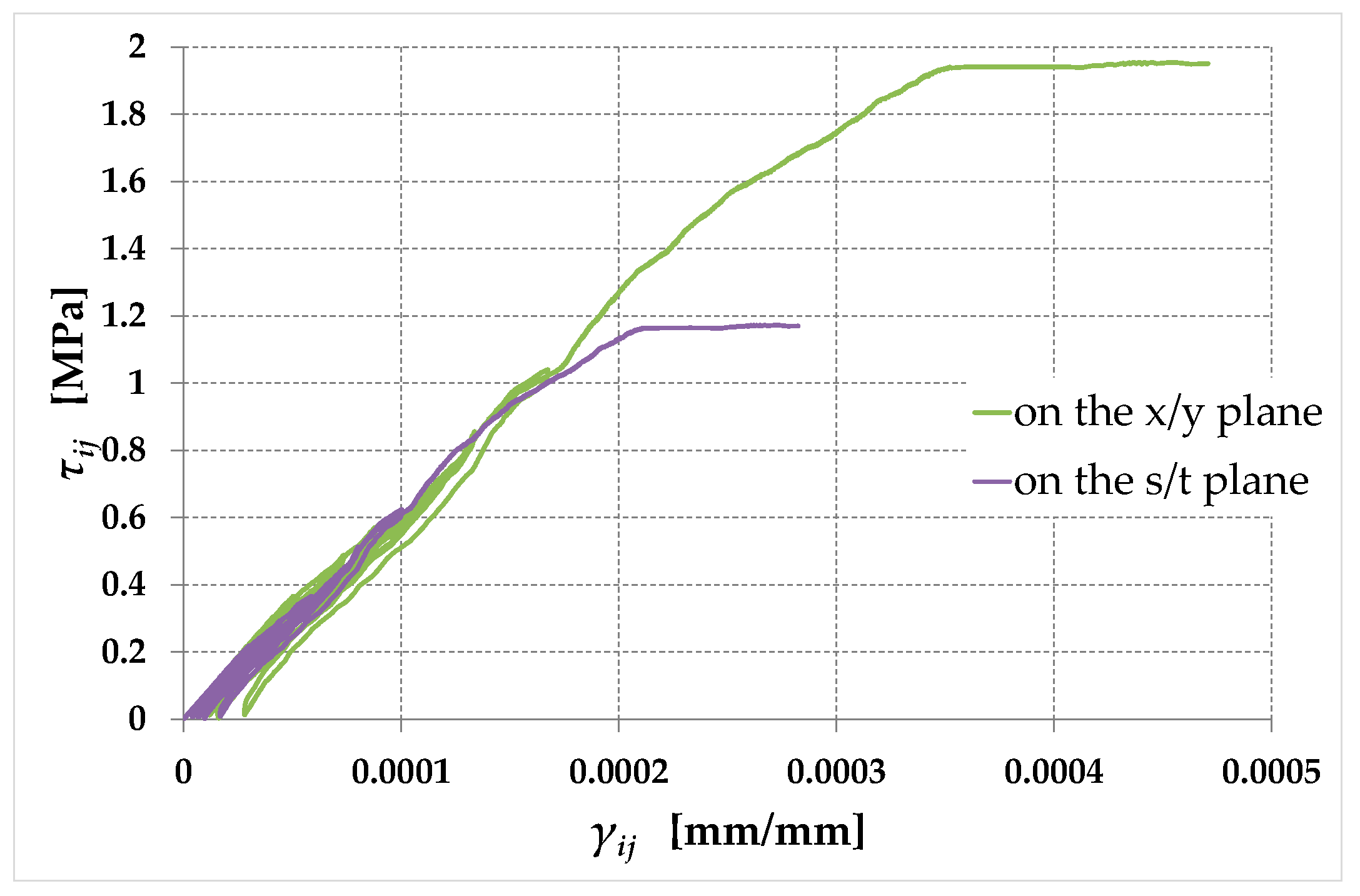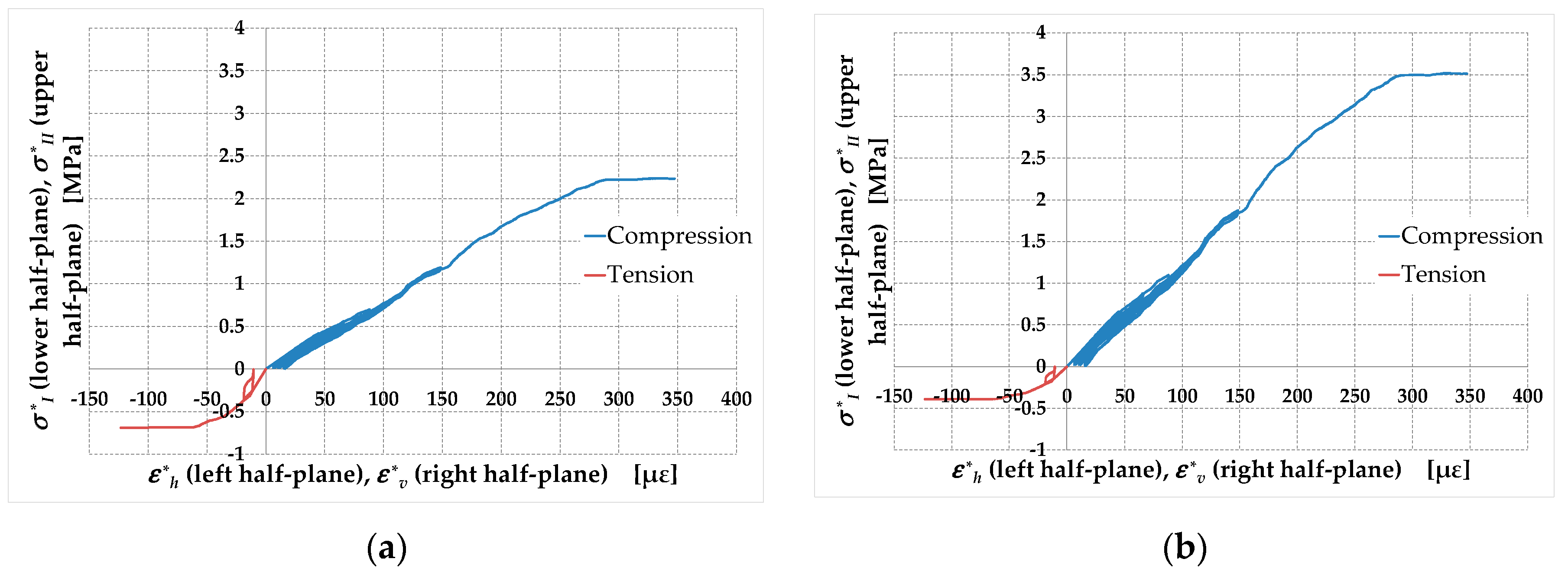3.1. Stress State at Point
Since the analysis carried out in the modified Mohr plane revealed inconsistencies in the RILEM proposal (
Section 2), we will address the problem precisely in the modified Mohr plane, where the stress points
and
have coordinates
and
, respectively (for sign conventions, see Reference [
10]). The solution will proceed in parametric form, making use of the Pole Method [
10].
For the stress state and reference frame of
Figure 1, also drawn in
Figure 3a for convenience, the Pole Method leads to identifying the Mohr pole,
, at the coordinate point
of
Figure 3b. This is a direct consequence of the Mohr pole property for the stress state, which constitutes the statement of Theorem 1.
Theorem 1.
The Mohr pole is the only point of the Mohr circle such that the point of intersection of the Mohr circle with a straight line drawn from the Mohr pole with any inclination angle, , with respect to the horizontal provides the stress state on the plane inclined at the angle with respect to the horizontal plane [21].
Remembering that the line of intersection of a plane with another plane is the trace of the first plane on the second plane, we can also define the Mohr pole according to the statement of Theorem 2, where the trace is the intersection between a plane parallel to
(the outgoing axis in
Figure 3a) and the
plane.
Theorem 2.
The Mohr pole is the only point of the Mohr circle such that the point of intersection of the Mohr circle with a straight line drawn from the Mohr pole with any inclination angle, , with respect to the horizontal provides the stress state on the plane whose trace forms an angle of amplitude with respect to the horizontal.
Figure 3.
Stress state for the infinitesimal neighborhood of point
in: (
a) the reference frame of
Figure 1; (
b) the modified Mohr plane of origin
, according to the RILEM interpretation of the diagonal compression test.
Figure 3.
Stress state for the infinitesimal neighborhood of point
in: (
a) the reference frame of
Figure 1; (
b) the modified Mohr plane of origin
, according to the RILEM interpretation of the diagonal compression test.
Through the condition of parallelism between lines traced by the Mohr pole and traces of the planes on which we want to know the stress components, Theorem 2 establishes a one-to-one relationship between the Mohr pole and the other points of Mohr’s circle. This allows us to find the Mohr pole when we know the coordinates of at least one point on the Mohr circle. To find the Mohr pole, it is therefore sufficient to intersect the Mohr circle with the straight line parallel to the trace of the plane on which the normal stress takes on the value
and the shear stress takes on the value
(
Figure 3a), plotted from the stress point
(
Figure 3b). Alternatively, it is possible to intersect the Mohr circle with the straight line parallel to the trace of the plane on which
and
(
Figure 3a), plotted from the stress point
(
Figure 3b).
With reference to the symbols introduced in
Figure 3b, it is then possible to find a relationship between the two normalized principal stresses and the radius,
, of the normalized Mohr circle:
The angle
also relates
to
, the normalized pure shear stress:
The parameter of the analytical solution proposed in this article is
, defined as the ratio between
and
:
which also fixes the ratio (in absolute value) between the two normalized principal stresses:
By substituting Equations (18) and (19) into Equation (23):
we can therefore express the angle
as a function of the parameter
:
Similarly, for the angle
in
Figure 3b:
where we used Equations (18) and (20) to express
as a function of
. Substituting Equation (25) into Equation (26) then gives the expression of
as a function of
:
On the other hand, the relationships established by the angles
and
in
Figure 3b between the pure shear stress and the principal stresses:
allows us to equate the second terms in Equations (28) and (29):
which provides a new expression for the ratio
:
Moreover, noting that the triangle with vertices at the coordinate points
,
, and
is a right-angled triangle—because inscribed in a semicircle (
Figure 3b)—
turns out to be the complementary angle of
:
Therefore, by comparison between Equation (22) and Equation (31), with
expressed by Equation (32):
which gives a more compact expression of
as a function of
:
Likewise for the angle
:
gives a compact expression of
as a function of
:
Finally, noting that
is a central angle subtended by the same arc that subtends the angle at the circumference
, we obtain that:
because the angle subtended by an arc at the center of the circle is double the angle subtended by the same arc at any other point on the circumference of the circle (the central angle theorem).
By expressing the Mohr circle equation in parametric form (in the
plane) using the
anomaly:
is the value of the central angle to assign to the parameter
to reach the coordinate point
starting from the coordinate point
, which represents the stress state on the (vertical) planes (in the neighborhood of
) with horizontal normal unit vector:
where
is a positive angle if it represents a counterclockwise rotation starting from the coordinate point
. Due to the relationship between the angles
and
(Equation (37)), we can also write:
The value is associated with the vertical trace (in the neighborhood of ), which represents the reference trace in the parametric study of the stress state starting from the principal stress values.
Having fixed the ratio between the coordinates of the diametrically opposite points
and
, to find
and draw the Mohr circle it is sufficient to know the coordinates of at least one point on the Mohr circle. Therefore, it is necessary to relate at least one point of the Mohr circle to the applied load,
, in
Figure 1.
By the statement of Theorem 2 (for further details see Reference [
10]), a pure shear stress,
, acts on the planes in the neighborhood of point
whose traces form angles of amplitude
with the horizontal direction in the
plane (
Figure 4):
For reasons of clarity of representation,
Figure 3b shows only the straight line parallel to the trace rotated clockwise (
) with respect to the horizontal direction, which is the same trace in
Figure 4, with positive pure shear stress (
). However, the property of the Mohr pole identifies a second plane with pure shear stress (
) on the Mohr circle, rotated counterclockwise (
) with respect to the horizontal direction. The trace of this second plane in the
plane is parallel to the straight line joining the Mohr pole to the coordinate point
, not shown in
Figure 3b.
Figure 4.
Trace of the plane on which the pure shear stress is positive.
Figure 4.
Trace of the plane on which the pure shear stress is positive.
Since the reference trace is vertical, the rotation of the trace with positive pure shear stress,
, is the angle
in
Figure 4, formed with the vertical diagonal. Using Equation (32), the rotation angle
—counterclockwise, therefore positive—then identifies the position of the trace with positive pure shear stress (
Figure 5a). Since the anomaly of the parametric Mohr circle equations (Equations (38) and (39)) is
,
is half the rotation at the center of the Mohr circle needed to reach the coordinate point
, starting from the coordinate point
(
Figure 5b). Moreover, the two rotation angles in the reference frame of
Figure 4 (
Figure 5a) and in the Mohr circle for the stress state (
Figure 5b) have the same direction of rotation.
Figure 5.
Rotation angle of the trace with positive pure shear stress,
, in: (
a) the reference frame of
Figure 4; (
b) the Mohr circle for the stress state.
Figure 5.
Rotation angle of the trace with positive pure shear stress,
, in: (
a) the reference frame of
Figure 4; (
b) the Mohr circle for the stress state.
The ASTM standard [
9] decomposes
along the direction of the presumed pure shear stress (the mortar bed joints) and its orthogonal direction (the mortar head joints). Similarly to what the ASTM standard does, we will therefore indicate by
the component of
along the traces (in the
plane) that form angles of amplitude
with the horizontal direction.
Since the standards specify that the specimens for the diagonal compression test must have a square shape [
9,
12] (
Figure 4):
The area of the wallette intersected by a plane inclined at an angle
(
Figure 4) is:
The pure shear stress (in absolute value) on the planes inclined at angles
is therefore:
which provides the normalized pure shear stress on the planes inclined at angles
, as a function of
:
After substituting Equation (34) into Equation (49), the expression of
as a function of the parameter
is:
Remembering the trigonometric relationships between
and
and between
and
(derived from the defining relation for
and the Pythagorean formula for sines and cosines):
and using Ptolemy’s identity that gives the difference formula for cosine:
we can rewrite Equation (50) in the form:
where we chose the positive sign for
, with
, because
is a positive scalar in
Figure 4 (as in
Figure 3b), not the value of an oriented angle. Moreover, since:
the sign of
is also positive.
Equation (54) allows a direct comparison between the value that
takes in the new proposal and
, the normalized pure shear stress in the ASTM interpretation of the diagonal compression test:
In fact, by recognizing the value of
in the multiplicative factor of Equation (54), we can define
:
as the correction factor of the normalized pure shear stress, with respect to the ASTM interpretation of the diagonal compression test:
Since the right-angled triangle with vertices at the coordinate points
,
, and
is similar to the right-angled triangle with vertices at the coordinate points
,
, and
(
Figure 6),
and
are directly proportional to
through the tangents of the angles
and
, respectively:
where we made use of Equations (34) and (36).
Figure 6.
Similarity between the right-angled triangle with vertices at the coordinate points , , and and the right-angled triangle with vertices at the coordinate points , , and .
Figure 6.
Similarity between the right-angled triangle with vertices at the coordinate points , , and and the right-angled triangle with vertices at the coordinate points , , and .
The half-sum between
and
then gives the first coordinate of the center of the circle,
, which is equal to the first coordinates of the points
and
(
Figure 6):
while the half-difference between
and
provides the radius,
, which is equal to the second coordinates (in absolute value) of the points
and
(
Figure 6):
Equations (61,62) therefore replace the normalizations of Equations (4-6). Having expressed the solution of the new formulation as a function of a single parameter, , the knowledge of directly provides the stress state at point . Seen in these terms, the coefficient becomes an unknown of the problem of determining the stress state at point . To find , it is necessary to couple Equations (61,62) with an additional condition (Section 4).
As a further observation, the comparison between Equation (20) and Equation (62) provides an expression of the angle
as a function of both
and
:
3.2. Strain State at Point
As known, strain analysis deals with the study of continuum deformation, which is a geometric problem and has nothing to do with the properties of materials. The description of the deformation therefore requires the introduction of some geometric quantities and algebraic operators [
22].
Denoted as
and
, respectively, the horizontal and vertical axes of the reference system of origin
(
Figure 7), let
be the infinitesimal strain tensor in the neighborhood of point
(infinitesimal strain theory):
where
indicates the direction orthogonal to the
plane.
It is worth noting that
is no longer a positive scalar in
Figure 7, because it is the amplitude of an oriented angle, which indicates the angle of rotation of the positive
half-axis relative to the positive
half-axis. Since positive values of an angle of rotation correspond to counterclockwise rotations,
is a negative rotation angle in
Figure 7.
The positive
-half-axis lies on the trace of one of the two planes of pure shear stress,
. Therefore, there is no normal stresses on the planes (in the neighborhood of
) parallel to
(
Figure 7):
Figure 7.
Stress state of an elementary cube with faces parallel and orthogonal to the trace with positive pure shear stress.
Figure 7.
Stress state of an elementary cube with faces parallel and orthogonal to the trace with positive pure shear stress.
On the planes perpendicular to
, however, both normal and shear stresses are present,
and
respectively (
Figure 7). In fact, a straight line drown from the Mohr pole,
, in the direction of the
-axis (perpendicular to the
-axis) would intersect the Mohr circle in
Figure 3b at a point with first coordinate
. This means that the stress state at point
is the sum of a pure shear stress and a uniaxial compressive stress state in the
-axis direction.
In linear elasticity, the principal directions of stress coincide with the principal direction of strain. This cancels out the change in the angles between the axes
,
, and
, since
and
lie along the principal directions of stress found in
Section 3.1 (
is one of the principal directions of stress as a result of the stress state at point
, which is a plane stress state):
The transformation of the strain components from the reference system
to the reference system
respects the typical transformation law of double symmetric tensors:
where
,
,
,
,
,
,
,
, and
are the direction cosines of the three positive coordinate axes
,
,
with respect to the three positive coordinate axes
,
,
(
Appendix A).
The transformation law therefore reads:
From Equations (68) and (69), it follows that the normal strain along the
-axis direction is a quadratic form of the direction cosines:
Since from Equations (51,52) it follows that:
where we made use of Equation (34),
also reads:
The Double-Angle Formulas then allow us to write the terms
and
in Equation (70) as functions of
:
which gives the expression of
as a function of the angle
, after substituting Equations (74,75) into Equation (70):
Similarly for the normal strain along the
-axis direction:
we can find the relationship between
and
:
while the Double-Angle Formulas provide the expression of
in function of the angle
:
The shear strain
is defined as positive if it causes the right angle of the first quadrant (between the
and
-axes) to decrease. Its expression, given by Equation (68), is a bilinear form of the direction cosines:
By rewriting Equation (80) in the form:
and recognizing the sine of the angle
in the double product
:
we finally obtain:
In the assumption of a generic rotation angle,
, between the two reference systems of
Figure 7 (redrawn, for convenience, in
Figure 8a), the functions of the angle
provided by Equations (76) and (83) allow a parametric plot in the parameter
of the strain state at point
, in the plane defined by the axes
and
:
As with the stress state (Equations (38) and (39)), the parametric plot of the strain state at point
is a circle centered on the horizontal axis (
Figure 8b). By analogy with the stress state, we can denote this graph as the Mohr circle for the strain state and the plane of the graph as the Mohr plane for the strain state. The center of the Mohr circle for the strain state is point
, as for the stress state.
Equations (84) and (85), allow us to reach the coordinate point
after a rotation at the center,
, equal to
, starting from the coordinate point
(
Figure 8b):
Since
and
, it follows from Equation (87) that
for
(clockwise rotation, as in
Figure 8a) and
for
(counterclockwise rotation). Consequently, after a rotation at the center,
, equal to
(the angle that is double the clockwise rotation, around point
, which causes the
-axis to overlap with the
-axis), we reach the coordinate point
, with
(
Figure 8b):
which is the same expression provided by the ASTM guidelines and adopted by all other standards.
Due to the presence of a uniaxial compressive stress state in the
-axis direction (the normal stress
in
Figure 8a), the normal strain in the
-axis direction is positive, because of the Poisson effect:
where
is the Poisson ratio. This causes the coordinate point
not to be on the vertical axis of
Figure 8b.
Figure 8.
Relationship between the rotation angles around: (
a) the origin
of the reference frame in
Figure 7; (
b) the center
of the Mohr circle for the strain state.
Figure 8.
Relationship between the rotation angles around: (
a) the origin
of the reference frame in
Figure 7; (
b) the center
of the Mohr circle for the strain state.
Furthermore, the point
in
Figure 8b is the only point on the Mohr circle that enjoys the property stated in Theorem 3.
Theorem 3.
A straight line drawn from in the direction of the -axis intersects the Mohr circle at a point whose coordinates are and , where is the axis rotated by in a counterclockwise direction with respect to .
We will denote
as the Mohr pole of the strain state. Due to the property of
, the coordinate point
lies on the straight line drawn from
in the direction of the
-axis (
Figure 8b). Since
, the strain state on planes (in the neighborhood of
) perpendicular to
is not a state of pure shear strain although the stress state on those planes is a state of pure shear stress. Therefore, it is not possible to use the shear strain
together with the shear stress
to plot the shear stress–shear strain curves for masonry.
It is worth noting that the coordinates and in the Mohr plane take on a specific meaning for the point of the -axis that is at a unit distance from point :
, where is the displacement component of point in the direction of the -axis (normal component of the displacement, or normal displacement);
, where is the displacement component of point in the direction of the -axis (tangential component of the displacement, or tangential displacement).
This justifies the use of the letter for the points in the Mohr plane for the strain state, as is the capital letter in the Western alphabet that corresponds to , the Greek letter used to denote the displacement vector.
3.3. Elastic Coefficients
Since the elementary cube (in the neighborhood of point
) with faces perpendicular to the
- and
-axes is subjected to both pure shear stress and uniaxial compression in the direction of the
-axis (
Figure 8a), we can calculate the Young modulus as the ratio of the normal stress
and the normal strain
(linear elastic theory):
In fact, the shear stress does not involve any component of normal strain in homogeneous and isotropic linear elastic materials (pure shear stress and normal stress are decoupled problems), which allows us to calculate
as if the elementary cube were in uniaxial compression. By noting that
is double the first coordinate of the center,
, of the Mohr circle, given by Equation (61):
and using Equation (73) for the value of
, we obtain:
Equations (73), (78), and (89) then allow us to find a relationship between the Poisson ratio,
and the principal strains along the diagonals:
It is worth noting that we could get the result in Equation (92) using Hooke’s laws with
(plane stress state), to find
and
:
By solving Equations (94) and (95) for the unknown
:
and using Equations (59), (60), and (93) to simplify the two expressions, in both cases we reobtain Equation (92).
The decoupling between the pure shear stress and normal stress problems also allows us to express the modulus of rigidity,
, as the ratio between
and
:
where
comes from Equation (54):
and
comes from Equation (81), with:
because
is a negative rotation angle (
Figure 8a):
After simplification, the shear modulus is therefore:
We could obtain the same result from the ratio
, with
derived from Equation (62) and
calculated as double the radius of the Mohr circle in
Figure 8b:
The values of
,
, and
in Equations (92), (93), and (103) comply with the relationship valid for the elastic coefficients in homogeneous and isotropic linear elastic materials:
3.4. Limiting Values of the Parameter
The limiting values for
and
:
with
and
expressed by Equations (92) and (93), respectively, provide information about the limiting values of
.
Starting from Equation (92), we can note that the value
would cancel the numerator of the equation and, consequently, the value of
. Since having
is physically unacceptable, we must therefore discard the possibility
. Ultimately, this is evidence of why the stress field at point
(
Figure 1) cannot be a state of pure shear stress, as is the stress state in the ASTM guidelines. In fact, since the state of pure shear stress implies that the two principal stresses have the same (absolute) value, Equation (22) provides precisely the value
in the ASTM interpretation of the diagonal compression test. We can therefore conclude that the ASTM assumption of a pure shear stress at point
does not comply with the theory of linear elasticity, because the presence of normal stress components at point
finds justification precisely in the theory of linear elasticity. It is worth noting that even some numerical methods confirmed, in the past, that a square plate made of an elastic isotropic material loaded in diagonal compression does not experience a state of pure shear stress but a complex non-uniform stress state, with normal components different from zero [
7,
23,
24].
Furthermore, since:
the denominator of Equation (92) is positive for small values of
, much lower than 1, while the numerator is positive for
. This means that
takes positive values in the two intervals:
Excluding the possibility —because it would imply that —Equation (113) is the first limitation for .
The second limitation arises from the first inequality in Equation (109), with
expressed by Equation (93). For Equations (110), (111), and (113), the denominator in Equation (93) is negative. Therefore,
if:
which provides (in the linear elastic range):
Due to the inequality in Equation (111), this second condition is more restrictive than Equation (113). To be precise, the second member in Equation (115) depends on the individual test. However, assuming that the
ratio does not exceed the value 0.25 (as usually done for the strains along the two diagonals [25-28]):
it is reasonable to conclude that
is never less than 4. This also raises serious doubts about the validity of the RILEM interpretation of the diagonal compression test, since the value assumed by
in the RILEM guidelines is equal to 3.24 (the inverse of the value in Equation (17)).
Finally, from the second inequality in Equation (109), it follows that:
which—assuming the validity of Equation (116)—is a less restrictive condition than Equation (115). In conclusion, from the theory of linear elasticity we can derive the lower limit value (lower bound) for
, expressed by Equation (115).
